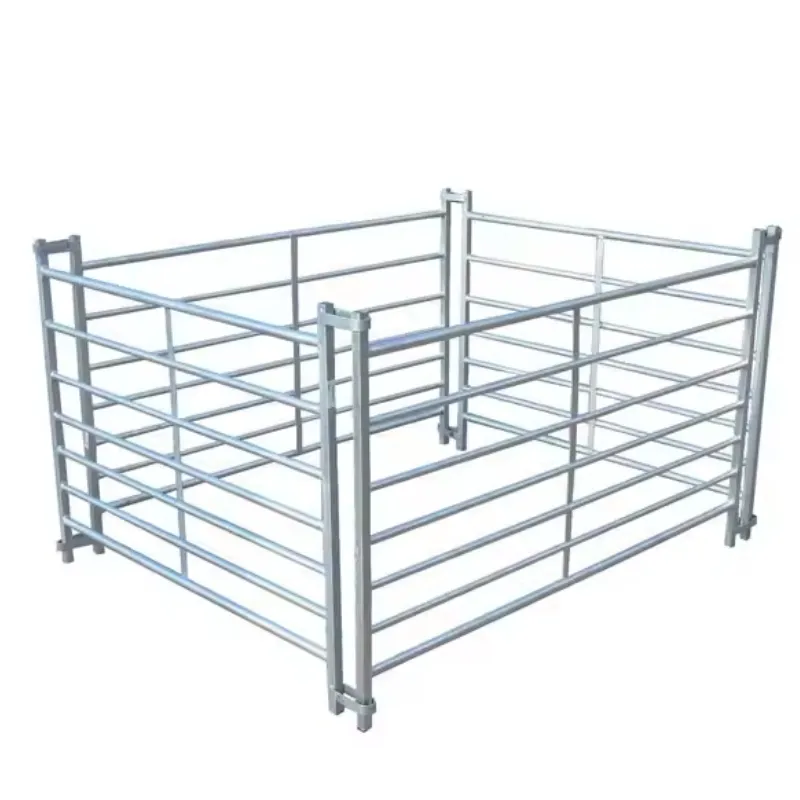
- Afrikaans
- Albanian
- Arabic
- Armenian
- Azerbaijani
- Basque
- Belarusian
- Bengali
- Bosnian
- Bulgarian
- Croatian
- Czech
- Danish
- Dutch
- English
- Esperanto
- Estonian
- Finnish
- French
- Galician
- Georgian
- German
- Greek
- hawaiian
- Hindi
- Hungarian
- Indonesian
- irish
- Italian
- Lao
- Latvian
- Lithuanian
- Luxembourgish
- Macedonian
- Maltese
- Myanmar
- Norwegian
- Polish
- Portuguese
- Romanian
- Russian
- Serbian
- Slovak
- Somali
- Spanish
- Swedish
- Thai
- Turkish
- Turkmen
- Vietnamese
Oct . 11, 2024 08:18 Back to list
square cattle fence
The Perfect Square A Guide to Building a Cattle Fence
Building a cattle fence is essential for anyone managing livestock. A well-constructed fence is not only a boundary for your cattle but also a protective barrier against predators and a tool for effective pasture management. One of the most efficient designs for a cattle fence is a square layout. In this article, we will explore the benefits of a square cattle fence and provide a step-by-step guide to building one.
Benefits of a Square Cattle Fence
First and foremost, a square fence offers optimal space utilization. Livestock need ample space to roam, graze, and exercise. A square shape allows for efficient use of land, providing equal access to pasture for all cattle. This design reduces the chances of overcrowding in any given area, promoting healthier grazing habits and improving the overall well-being of your cattle.
Additionally, square fencing is relatively easy to construct. With equal sides, builders can simplify measurements and reduce material waste. This uniformity allows for a more straightforward installation process, whether you are a seasoned farmer or a novice homesteader. The geometry of a square also makes it easier to calculate the amount of fencing material needed, ensuring that you purchase just the right amount.
Finally, a square cattle fence can enhance safety
. The straight lines and right angles of a square are less likely to create blind spots for both cattle and predators. This visibility can be crucial for monitoring your herd and protecting them from potential threats.Step-by-Step Guide to Building a Square Cattle Fence
1. Planning and Design Before you begin building, outline the desired area for your fence. Use stakes to mark corners and potentially string a line between them to visualize the square shape. Ensure that the area is free from large rocks, debris, or any obstacles that could complicate the construction process.
square cattle fence

2. Selecting Materials Choose the appropriate materials based on your preferences and budget. Common materials for cattle fencing include wood, barbed wire, electric fencing, and woven wire. Each has its pros and cons; for example, electric fencing can deter animals effectively but requires a power source, while wooden fencing provides a more visually appealing and permanent solution.
3. Gathering Tools Essential tools for building a square cattle fence include a post hole digger, hammer, level, fencing pliers, and wire cutters. If using wooden posts, a saw might also be necessary to cut them to the desired height.
4. Installing Corner Posts Begin by digging holes for your corner posts, ensuring they are deep enough for stability. A good rule of thumb is to bury at least one-third of the post in the ground. Place the corners in position and use a level to ensure they are vertical. Mix concrete as needed to reinforce their hold.
5. Attaching Intermediate Posts Set your intermediate posts along the marked perimeter, keeping equal spacing between them according to your fencing material's recommendations (usually between 8 to 12 feet apart). Repeat the leveling process and secure these posts as you did for the corners.
6. Installing the Fence Material Once posts are in place, begin attaching your chosen fencing material. If using wire, start at one corner post and stretch it taut to the next, securing it with fencing staples or clips. Ensure that the wire is high enough to deter cattle from jumping over.
7. Finishing Touches After installing the fence, check for any loose areas or sagging wire. Remedy these issues before introducing cattle to the area. You may also wish to add a gate for easy access in and out of the fenced area.
8. Regular Maintenance A square cattle fence requires regular inspections to ensure it remains secure and functional. Check for rust, loose posts, or gaps that might allow cattle or wildlife to escape.
In conclusion, a square cattle fence provides a practical solution for managing livestock. With efficient space use, easy construction, and enhanced safety, this design can benefit any farmer or rancher. By following the steps outlined above, you can create a sturdy and effective fence that ensures the well-being of your cattle and the integrity of your pasture. Happy fencing!
-
Your Ultimate Solution for Australian Temporary Fencing
NewsMay.14,2025
-
The Ultimate Guide to Crowd Control Barriers: Secure Your Events with Ease
NewsMay.14,2025
-
Secure Your Livestock with High-Quality Livestock Fence Panels
NewsMay.14,2025
-
Enhance Your Livestock Management with Top-Quality Cattle Fences
NewsMay.14,2025
-
Enhance Security and Safety with Temporary Fencing Solutions
NewsMay.14,2025
-
Corral Gates
NewsMay.14,2025









